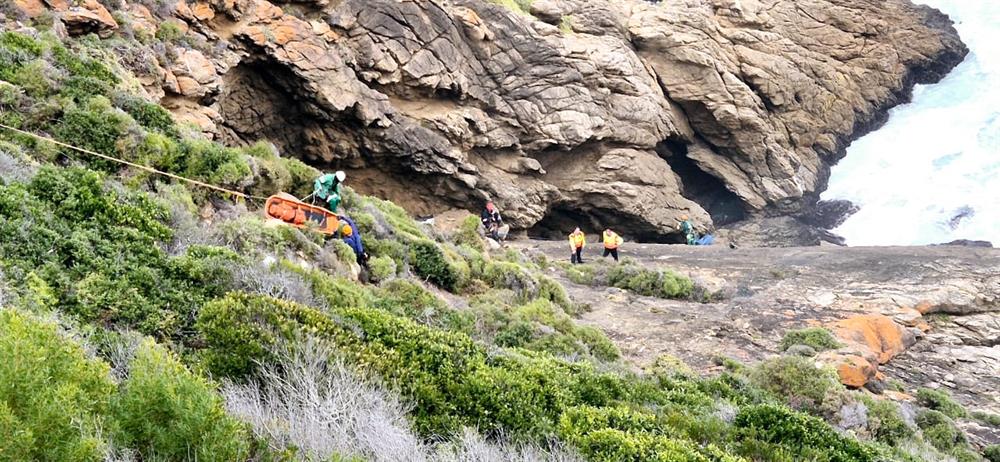Update
About 32 highly skilled rescue personnel arriving in 18 vehicles selflessly rolled up their sleeves to recover the body of the woman who had lost her life at Voëlklip on Monday 31 March.
As the abundance of mountains and gorges characteristic of the Southern Cape topography renders most rescue and recovery scenes inaccessible, it is an undertaking few people outside of emergency services circles ever get to witness.
George Herald was on the ground to witness the massive operation that not only served to give closure to loved ones, but also to legally enable the deceased's financial affairs to be wound up - an economic function that can only be initiated once a body has been found.
Due to the tricky terrain, about 90 minutes passed from the time the body was found until the recovery of the remains to the top was completed.
Dispatching the SA Red Cross Air Mercy Service helicopter from Oudtshoorn to hoist the remains up the 180m high slope to the Voëlklip road would have been first prize, but unfortunately there was too much fog on the mountains for the bird to leave the base.
With the crumpled-up vehicle pegged in the water between the rocks, rescue divers had their work cut out to establish whether or not the body was still in it. With the new moon springtide having taken place two days before, tidal differentiations were significant and ocean currents were strong.
Locating and recovering the body before the tide got too full was a race against time.
 All hands on deck to help haul the packaged body up the steep ledge. Photo: Supplied
All hands on deck to help haul the packaged body up the steep ledge. Photo: Supplied
In the initial stages, a police diver, tied with rescue rope to another standing on the rocks, could be seen navigating the rough ocean waters, peering into the wreckage to try and find the body. This while a third rescue diver sat a little further back on the rocky outcrop, belaying his fellow watermen.
Once established that the body was not in the car, the search area was widened and the woman's remains were eventually found in a water-filled gully nearby. The ebb and flow of water presented their own challenges to these divers who, along with other rescue crew members, time and again risk their own lives to search for the bodies of those who have already lost theirs.
After being securely packaged into a sked stretcher, two rescue workers walked the precious cargo (tied to a pulley system at the top) up the slope - the one pulling from above while the other pushed from below.
At the same time, up to 15 rescue personnel at a time pulled on the ropes from above in this high-angle recovery.
 Rescue teams work their way up the steep ledge with the body after it was recovered. Photo: Supplied
Rescue teams work their way up the steep ledge with the body after it was recovered. Photo: Supplied
Inching their way up the rugged, steep and in places slippery and wet terrain, unhooking the stretcher from bushes a couple of times along the way, the team reached the top, gassed and thirsty. The remains were then carefully loaded into the forensic pathology vehicle and taken away.
Once the paperwork was done, all the rescue equipment was brought back up and packed away, the divers changed out of their wet wetsuits, and the vehicles started departing one by one until it was as if nothing had ever happened.
Previous articles:
Woman's body retrieved from water near Voëlklip
Man’s body and car wreck found in the water at Voëlklip
Another incident on Voëlklip road
‘We bring you the latest Garden Route, Hessequa, Karoo news’
















